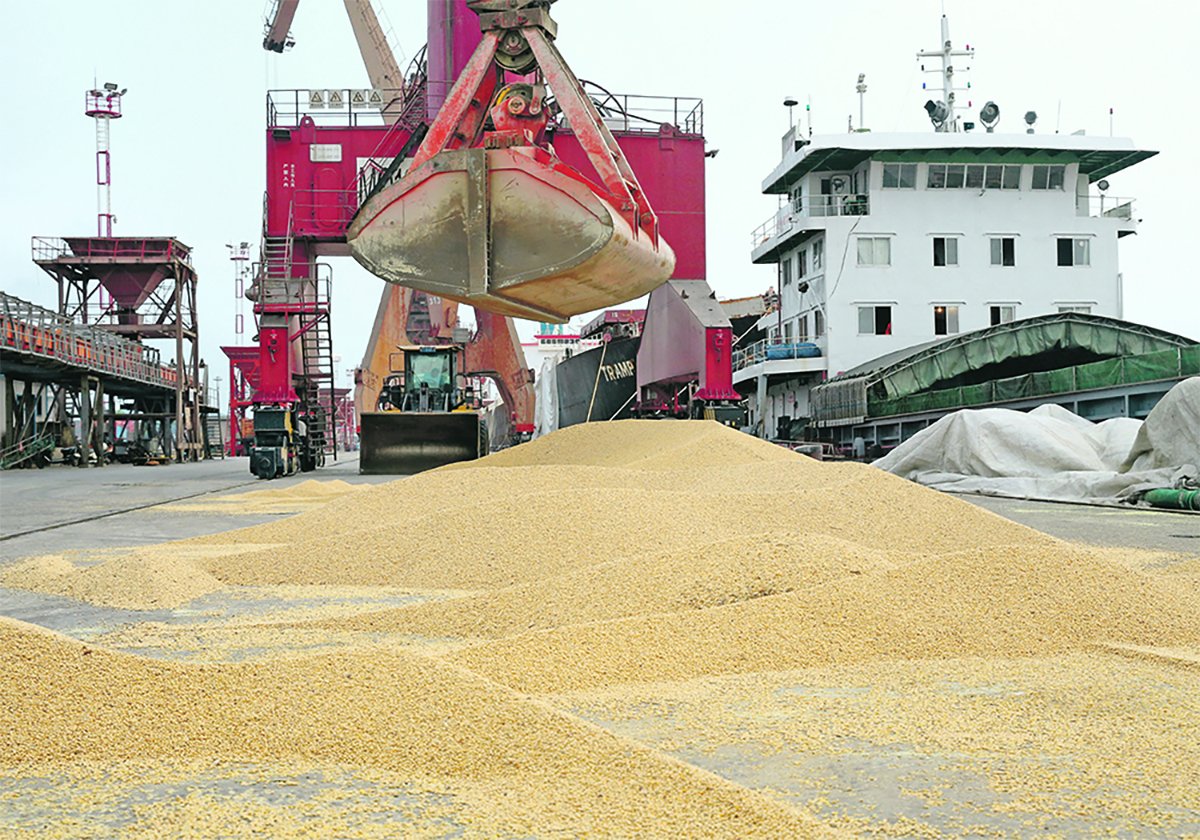When you set a record ag trade deficit for the third consecutive year, the decline isn’t an aberration or a coincidence. It is, in fact, growing proof that a key element of your national ag policy is headed in the wrong direction.
And, according to an Outlook for U.S. Agricultural Trade report released by the U.S. Department of Agriculture in late summer, America’s ag trade deficit continues to head in the wrong direction with gusto.
Specifically, “the U.S. food and ag trade deficit will soar to a record US$42.5 billion in the fiscal year opening Oct. 1,” reported the Food and Environment Reporting Network, “fuelled by steadily growing consumer demand for imported produce, alcohol, coffee and sugar.”
Read Also

U.S. soy subsidies will cause lasting damage to industry
Nothing illustrates the demise of world trade agreements more than the recent dispute between the United States and China.
Estimates now show that “U.S. agricultural imports in FY (fiscal year) 2025 are forecast at $212.0 billion, or $8 billion higher than revised FY 2024 estimates.”
Meanwhile, ag exports continue to fall.
“U.S. agricultural exports in FY 2025 are forecast at $169.5 billion, down $4 billion from the revised forecast of FY 2024,” noted the USDA.
The decline will be driven by lower-valued sales for U.S. agriculture’s Big Four.
“Soybean exports are projected down $1.5 billion … corn exports are forecast to fall $900 million … cotton exports are forecast $900 million lower … (and) beef exports are forecast (to be) down $1 billion.”
The trade outlook does include a few pleasant surprises. For example, the USDA foresees a $1.2 billion rise in U.S. horticulture exports — mostly fresh and processed fruit and vegetables — to “a record $41.5 billion.”
Also, 2025 ethanol exports will maintain their record 2024 sales, pegged at 1.9 billion gallons and valued at $4.3 billion. That’s a small slice of good news for corn growers, who have watched corn prices slide lower as 2024’s big harvest comes into sight.
Even as U.S. ag exports continue their southbound sag, our key ag customers — Canada and Mexico— are holding on to their historical top spots, squeezing relative newcomer China back into third place. Canada is forecast to buy $28.9 billion worth of U.S. ag exports in 2025 and Mexico $28.2 billion.
China, on the other hand, will purchase an estimated $24 billion worth of U.S. farm and food goods in 2025, down $3 billion from a year ago and down steeply from its best buying year, 2022, when it shelled out $36.4 billion for our ag exports.
The USDA also recently dropped current 2024 ag exports to China, lowering them $700 million “mostly (as) a result of… continued strong competition from Brazil.”
The realization that many of America’s most loyal ag customers are slowly but steadily moving their business to lower cost, equally productive nations is nothing new to long-time ag trade watchers.
Indeed, the net value of U.S. ag exports has been on the red side of the books in five of the last eight years. And the net positive years — 2018, 2021 and 2022 — add up to just a collective $22.6 billion surplus.
Meanwhile, the five years of net ag export losses (2019, 2020, 2023, 2024, and USDA’s 2025 forecast) in the last eight equal a collective minus $95.1 billion. That’s a knee-buckling trend for the deeply trade-dependent U.S. ag sector.
Some policy pundits suggest the trend be countered with more farm bill money for “trade promotion” and “market development.” For Congress, which is already authorized to spend at least $1 billion per year on both efforts, to act on either, however, it first needs to act on the larger problem, passing a now two-year-delayed farm bill — two years when the ag trade deficit soared $73 billion.
Alan Guebert is an agricultural commentator from Illinois.















